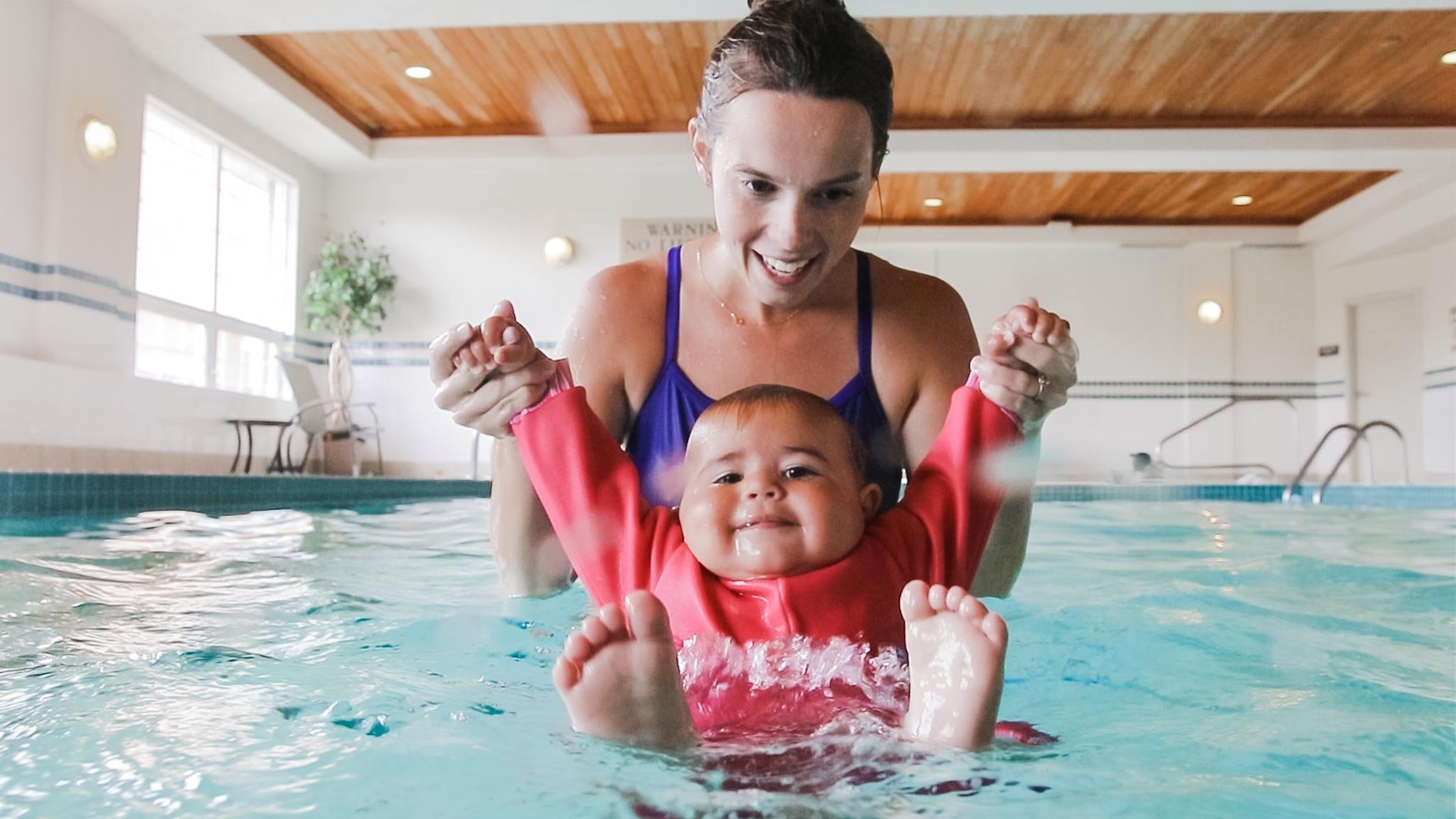What Should Your Baby Wear to Swim?
Choosing the right swimsuit color for your child isn't just about style (although they are pretty cute) — it's also about safety. As moms, our number one priority is safety during swim lessons, and one often overlooked aspect is the visibility of their swimsuit. The colour of your child's swimwear can significantly impact how easily they can be spotted in the water, which is crucial for their safety.
So Why Does Swimsuit Colour ACTUALLY Matter?
Visibility is extremely important when it comes to babies and water. Bright, neon colours stand out and make it easier for parents, instructors, and lifeguards to keep an eye on children, whether they are in a pool, or body of water (especially with varying water conditions).
Visibility
Several factors can affect how visible a swimsuit is in the water:
Water Clarity: Murky or cloudy water makes it difficult to see through the water
Light Conditions: Bright sunlight can create reflections on the water surface making it difficult to see in, whereas nighttime conditions often make the water too dark to see in.
Depth: The deeper the water, the less light penetrates.
Recommended Colours
To ensure maximum visibility and safety, we recommend the following colours:
Neon Yellow
Neon Orange
Neon Green
Neon Pink
These neon colours are highly visible in different water environments and lighting conditions, making it easier to spot your child quickly in and out of the water.
Colours to Avoid
Some colours are less effective in terms of visibility and should be avoided:
Blues
Whites (and other neutrals)
Pastels
Although there are tons of cute baby bathing suits in these colors, they tend to blend in with the water, making it harder to spot children. For example, blue swimsuits can blend with the colour of the pool, and white or pastel colours can be camouflaged by the bubbles and reflections on the water's surface.
Practical Tips for Parents
Consider the Environment: Select swimsuits in neon colors based on the swimming environment you are going to, to ensure your child stands out against whatever the water color is.
Check for Fading: Regularly inspect your child's swimwear for signs of fading, which can reduce visibility. Bright colors can fade over time with exposure to sun and chlorine.
At watermellow, we love a variety of options for the perfect swimsuit for your child. You can browse our favourites here. These swimsuits are designed with safety in mind, ensuring that your child is easily visible in any swimming environment.
Safety is Our Priority
All that to say, by choosing the right swimsuit color and staying informed about safety practices, you can help ensure that your child's swimming experience is both fun and secure. You can check out some of our favourite safe, stylish swimwear here!
We understand that bringing your baby to the water can be a daunting experience. It's natural to feel apprehensive about your child's safety in and around water. At watermellow, we believe that introducing your baby to the water at a young age not only makes the experience safer but also helps them grow more comfortable and confident as they get older. By starting early, your child can develop essential swimming skills that will benefit them throughout their life.
For more detailed information on what age it’s safe for your baby to start swimming lessons, check out our blog post linked here.
To learn more about baby swimming classes check out our program…
Happy swimming!
-Kaylee Kennedy
Meet Kaylee Kennedy
I'm Kaylee Kennedy, the founder of watermellow.
Our renowned swimming program nurtures and develops each baby's unique abilities.
Inspired by my experience as a young mom teaching my little one to swim, I'm passionate about swimming and its benefits for early childhood development.
Join us at watermellow to help your baby grow an amazing relationship with the water in a safe and supportive environment, creating lasting memories together.









